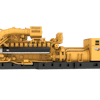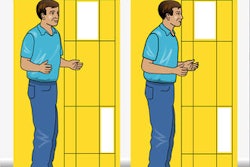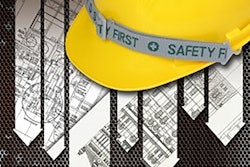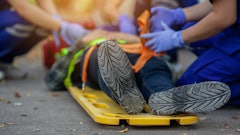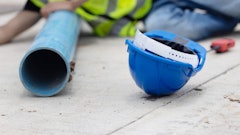
The Center for Construction Research and Training says the construction industry has the highest incident rate of back injuries of any industry except transportation. Of all the construction-related injuries that occur each year, 25% of them are back injuries.
Every year, a back injury causes 1 in 100 construction workers to miss work — usually missing about seven workdays, but sometimes more than 30. Most back problems are low-back injuries. Repeated injury to your back can cause permanent damage and end your career.
Most back injuries are sprains and strains from lifting, lowering, carrying, pushing, and pulling materials. You are at higher risk of low-back injury if you often carry heavy loads, must twist while carrying heavy loads, or work a lot while bent over or in other awkward postures.
Injuries can be reduced by planning, changing how work is done, and training workers and supervisors.
Plan
- Cut down on carrying. Have materials delivered close to where they will be used.
- Store materials at waist height whenever possible.
- Raise your work to waist level, if you can. Pipefitters use pipe stands. Masons have adjustable scaffolds to keep the work at waist height.
- Make sure floors and walkways are clear and dry. Slips and trips are a big cause of backinjuries.
- Take rest breaks. When you are tired, you are more prone to injury.
Get Help
- Use carts, dollies, forklifts, and hoists to move materials — not your back.
- Use carrying tools with handles to get a good grip on wallboard or other odd-shaped loads.
- If materials weigh more than about 50 pounds, do not lift them by yourself. Get help from another worker or use a cart.
Move Carefully
- When lifting or carrying materials, keep the load as close to your body as you can.
- Try not to twist, when lifting and lowering materials. Turn your whole body instead.
- Lift and lower materials in a smooth steady way. Try not to jerk the lift.
- When you pick up materials off the ground, try supporting yourself by leaning on something while lifting. Don’t bend over; instead, kneel on one knee and pull the load up on to your knee before standing. (Wear knee pads when you kneel.)
Apprentices
Apprentices get some of the hardest work to do. Being young and strong, they sometimes carry more weight than they should. Make sure apprentices are protected against back injuries, so they don’t end up with back problems and have to leave the trades. Work with your employer to decide how the work can be changed to protect you and your coworkers from back injuries.
Build back-safety into any training. Fewer injuries mean better productivity and lower costs.
What About Back Belts?
Some contractors have workers wear back belts. If a doctor prescribes a back belt, it may help someone recovering from a back injury. But a recent government study (by NIOSH) found no evidence that back belts can prevent injuries.
Don’t depend on a back belt to protect you; instead, try to change the lifting work so it can’t hurt you.
If you have questions about stretching exercises, back belts, or other issues, call your local union, the Center to Protect Workers’ Rights (CPWR) (301-578-8500 or www.cpwr.com ), the National Institute for Occupational Safety and Health (1-800-35-NIOSH or www.cdc.gov/niosh), or OSHA (1-800-321-OSHA or www.osha.gov). Or check the website www.elcosh.org.

